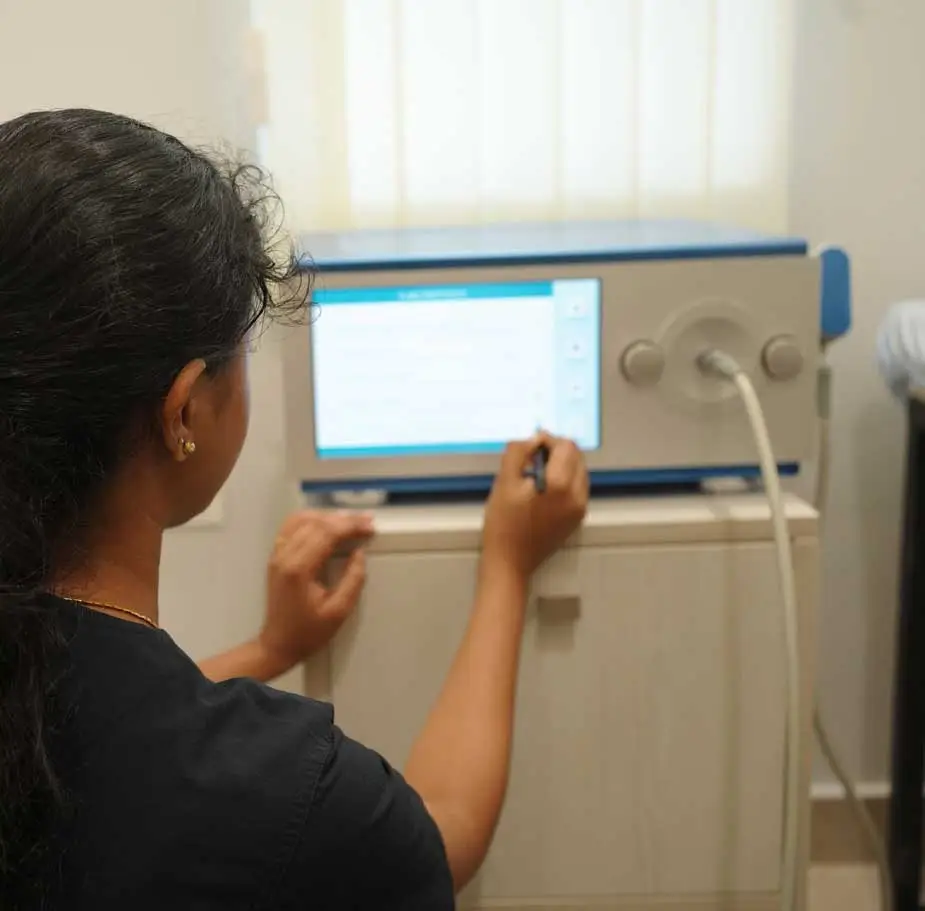Runner’s Knee
Symptoms
Symptoms of runner’s knee may include:
Pain in the anterior aspect of the knee while squatting, bending, and climbing stairs.
Swelling
Popping sound
Grinding feel
Weakness
Causes
The causes of runner’s knee may include:
Diagnosis
Treatments
Proper rest is essential to avoid further complications, once the pain got reduced try low-impact exercises. The patient should stop all the weight-bearing activities including sports. The application of ice packs for 15 to 20 min is also effective to reduce swelling of inflamed muscles. Avoid applying the ice directly to the skin, wrap the ice in a towel to avoid frostbite.
IFT, TENS, and Ultrasound are used for pain management. Once the pain got reduced after pain management with electrotherapy will start with PCRT or ESWT.
Our Sports Injury Recovery Program incorporates an advanced modality called Extracorporeal Shockwave Therapy (ESWT), which is an advanced modality for the treatment of musculoskeletal conditions and its very effective in the treatment of shin splits. ESWT uses sound waves (high amplitude pulses of mechanical energy) to breakup infected tissues and stimulate the healing process. The energy triggers the regeneration and reparative processes of the bones, tendons and other soft tissues. ESWT is used to treat chronic, sub-acute and acute conditions. After the shockwave session, Cryotherapy is advised to avoid muscle soreness.
In addition, in severe cases, Pulsed Cell Repair Therapy (PCRT). PCRT directs a series of electromagnetic impulses through injured tissue. Each pulse induces a tiny electrical signal that stimulates cellular repair and harnesses the body’s own ability to heal itself. This natural signal promotes the body to repair damaged or worn tissues/cartilages and to maintain healthy and proper functioning of the joint.
Sometimes, because of aging, injury or disease, signals that are naturally produced by the body is disturbed. When this occurs, the body is unable to repair the damage itself. This results in pain, inflammation, and loss of proper function in the joint. PCRT is unique in that it mimics the body’s natural signal, activating the normal healing process and stimulates the growth and repair of the damaged tissue.
Because of the regenerative process, patient is advised for rest without any vigorous movements in the joint. If the patient is in pain, we will manage with other electrical modalities and then start with PCRT. After the PCRT sessions, we begin with our muscle strengthening exercises and lifestyle modifications, approximately 3 to 4 weeks after completing the PCRT sessions, which helps the patient become functionally independent.

